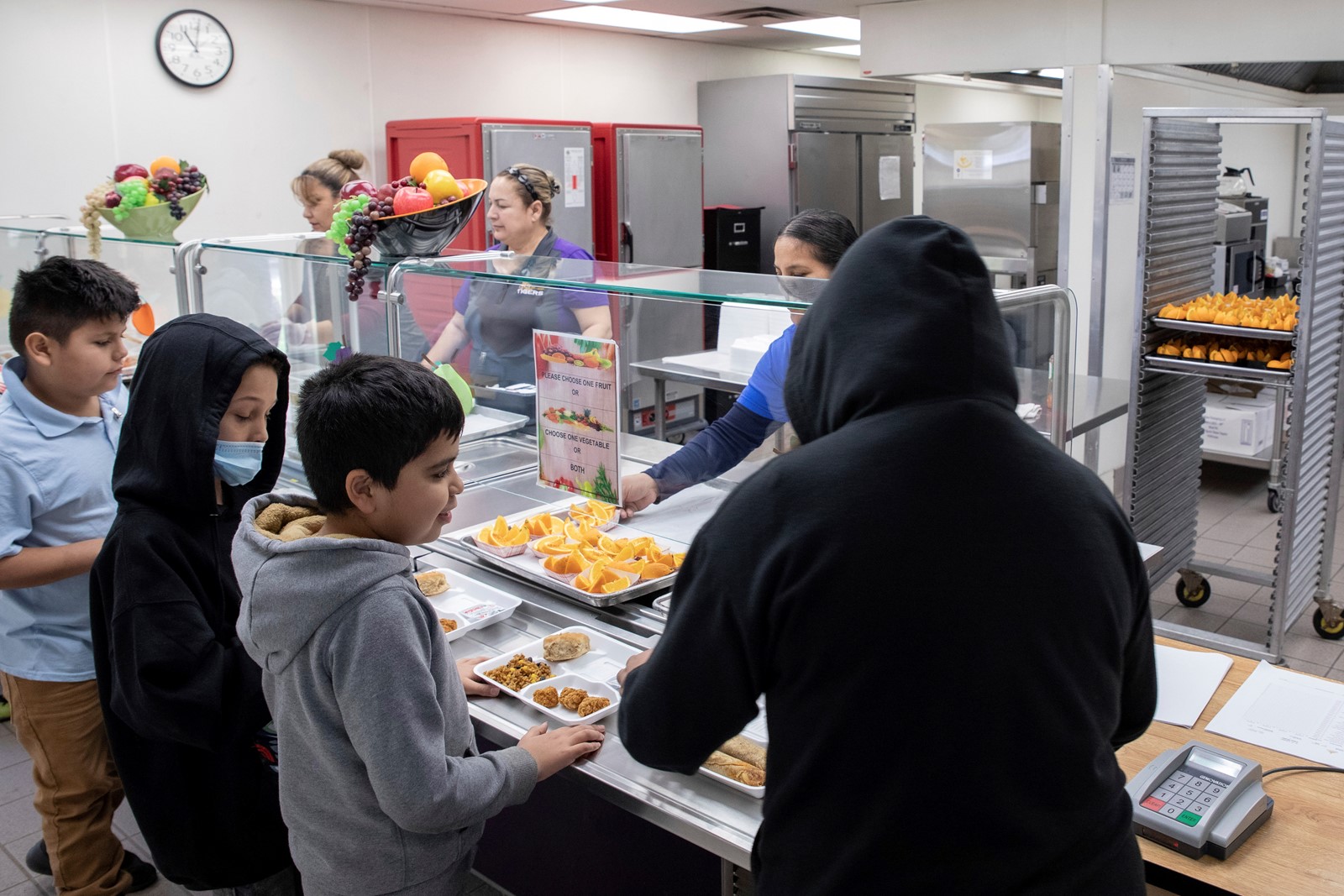
PHOENIX >> America’s schools say kids are hungry — just as pandemic-era benefit programs have lapsed. There is growing concern about the effects on kids’ ability to learn.
Congress temporarily made school meals free to all American schoolkids, but since that ended last fall, the need has only seemed to grow.
Soaring food prices are adding strains on families who are seeing reductions in multiple kinds of financial assistance. One federal program that ends this month had given nearly 30 million Americans extra food stamps during the pandemic.
School cafeterias typically don’t turn away a hungry kid, but debts for unpaid school meals have been rising — showing the level of need and raising questions about how schools will keep feeding everyone without federal money to do it. The neediest kids are eligible for free or reduced-price meals, as before the pandemic, but qualifying for those benefits requires applications that haven’t been necessary for several years.
“Programs that provide direct food assistance are hugely critical and we are going to see the effects of not having them over the next couple of months,” said Megan Curran, policy director for Columbia University’s Center on Poverty and Social Policy.
In the last academic year, with nearly all schools back operating in person, the number of school meals served to students jumped dramatically and was slightly higher than pre-pandemic levels, according to a report Thursday from the Food Research & Action Center. Already, it said, states now are reporting drops in the number of meals served.
More than 34 million people, including 9 million children in the United States, are food insecure, according to the U. S. Department of Agriculture, meaning they lack consistent access to enough food for every person in their family to be healthy.
Children in such households are more likely to struggle academically and repeat grade levels, among other challenges, according to researchers.
For fourth grader Fabian Aguirre, it’s hard to think about math equations when he’s sitting in class with a growling stomach.
When he arrives in the morning, Fabian eats breakfast served by the school in south Phoenix, but he can get hungry in classes before lunch. On days he doesn’t eat at home first, even the meals offered by the school aren’t enough to keep him feeling full.
“It’s hard to focus in class when I’m hungry,” said Fabian, 10.
At his school, V. H. Lassen Academy of Science and Nutrition, all students are eligible to receive free meals. The Roosevelt School District, where 80% of students are Hispanic and 12% are Black, covers the meals with aid from a federal program for low-income school communities.
To reach students who might be embarrassed about not having eaten at home, the school recently changed how it distributes free breakfast. Carts filled with prepackaged breakfast meals are rolled outside by the entrance to the school, instead of being kept in the cafeteria.
“We realized that a lot of our students were going straight to the playground and not going into the cafeteria to eat before school,” said Jessica Padilla, a sixth grade math and science teacher.
While they lasted, the universal free meals addressed several concerns about student hunger. There was no paperwork involved. And kids who needed them didn’t have to worry about stigma because they were available to everyone. Some states, including California, are using state money to continue these programs, but most have gone back to charging all but the neediest kids for meals.


 PREVIOUS ARTICLE
PREVIOUS ARTICLE
